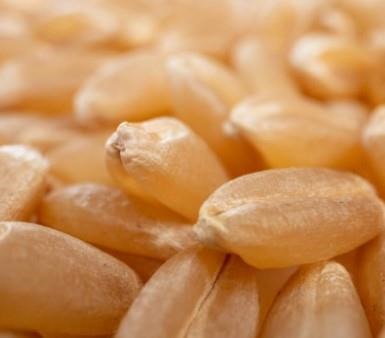Breeding soundness exams can uncover potential problems with young bulls that were just purchased and older bulls that have already sired calf crops.

Bull breeding soundness exams can identify bulls that have a low probability of siring calves.
This spring season has seen average temperatures in North Dakota 10 to 20 degrees colder than normal. Cold temperatures and wind can result in damage to bulls’ ability to produce viable semen. Bull breeding soundness exams offer the opportunity to identify and remove bulls from the breeding herd that have a low probability of siring calves.
“Since the number one determinant of profit potential in a beef cow-calf operation is birth of a live calf, turning out infertile bulls can have tremendous impact on profitability,” says Karl Hoppe, North Dakota State University Extension beef cattle specialist. “Breeding soundness exams can uncover potential problems with young bulls that were just purchased and older bulls that have already sired calf crops.”
However, less than 20% of producers in the United States perform breeding soundness exams on their bulls prior to spring turnout, according to a National Animal Health Monitoring Survey.
The breeding soundness exam performed by your veterinarian includes examination of the bulls’ physical structure, reproductive organs and semen.
“The physical examination is important because bulls with proper structure are more likely to hold up to the rigors of breeding season compared with bulls with structural problems,” says Dr. Gerald Stokka, NDSU Extension veterinarian and livestock stewardship specialist.
Structural problems with feet and legs or movement in general are a big issue because bulls are asked to cover a lot of ground and need to be free of physical problems to successfully breed cows. Young bulls will lose body condition during a breeding season, so they must enter the breeding season with adequate condition.
Vision is also an important part of the breeding season for bulls. Seeing the mounting behavior of cows in heat helps the bull identify who is ready to breed from across the pasture.
Evaluation of the reproductive organs is another important part of the breeding soundness examination. The penis, testicles, vesicular glands and other internal structures are evaluated. These organs need to be free of injuries, infections or defects in order for a bull to successfully breed cows.
Scrotal circumference is heavily scrutinized in young bulls as it serves as an indicator of semen production and fertility. As young bulls grow, the standards for adequate scrotal circumference also increase. For example, a bull that is less than 15 months old should have a circumference of at least 30 centimeters, whereas a bull greater than 24 months should have a scrotal circumference of at least 34 centimeters. Bulls with inadequate scrotal circumference should be discriminated against, as fertility and number of cows bred are a main concern. Extreme circumference size, for example greater than 40 to 45 centimeters in yearling bulls, has been linked with high failure rates of the breeding soundness exam.
A sample of semen is evaluated for motility, morphology and concentration. Motility is the movement of sperm. Ideally, a rapid swirling movement in the sample will be observed. If sperm are not moving in a synchronized manner, they may not be able to successfully navigate through the female reproductive tract to the site of fertilization. If a bull has less than 30% of sperm with proper motility, they are not recommended for breeding, whereas a bull with greater than 70% proper motility receives a very good rating for the motility portion of the exam.
Morphology is an evaluation of the structure of the sperm. Ideally, the sperm will have head and tails of proper shape. Examples of common defects include tapered heads, detached heads, folded tails and coiled tails. Sperm that have the incorrect structure will not result in successful fertilization, and a minimum of 70% of the sperm cells need correct morphology for a bull to pass a breeding soundness exam.
“Just because a bull sired calves last year does not mean he can do it again this year,” says Lisa Pederson, NDSU Extension livestock specialist. “Injuries during the non-breeding months as well as effects of extreme cold weather and frostbite can render once-fertile bulls infertile.”
The process of making sperm, spermatogenesis, takes 60 days, so frostbite or other injuries that occur in March may still be lingering in May. Perform breeding soundness exams close to the time of breeding to ensure recovery from winter injuries and enough time in advance of turnout to find new bulls if the exam finds fertility problems.
An important indicator of breeding season success is stocking rate, or how many cows a bull is required to breed in a breeding season. The nationwide average stocking rate is 25 cows per mature bull or 15 cows per yearling bull. Stocking rates of up to 50 cows per bull are used in some systems, but high stocking rates may lead to cows not becoming pregnant on their first heat of the breeding season and subsequently calving late the following year.
The breeding soundness exam does not, however, evaluate libido or willingness to breed.
“This is very important to keep in mind, especially when using young or virgin bulls,” says Hoppe. “Young bulls may have all of the qualifications to pass the breeding soundness exam, but if they aren’t actively breeding cows, producers must find a different option. Watch breeding activity closely because catching and correcting problems during the breeding season is much more profitable than waiting for open cows to calve.”
Source : ndsu.edu